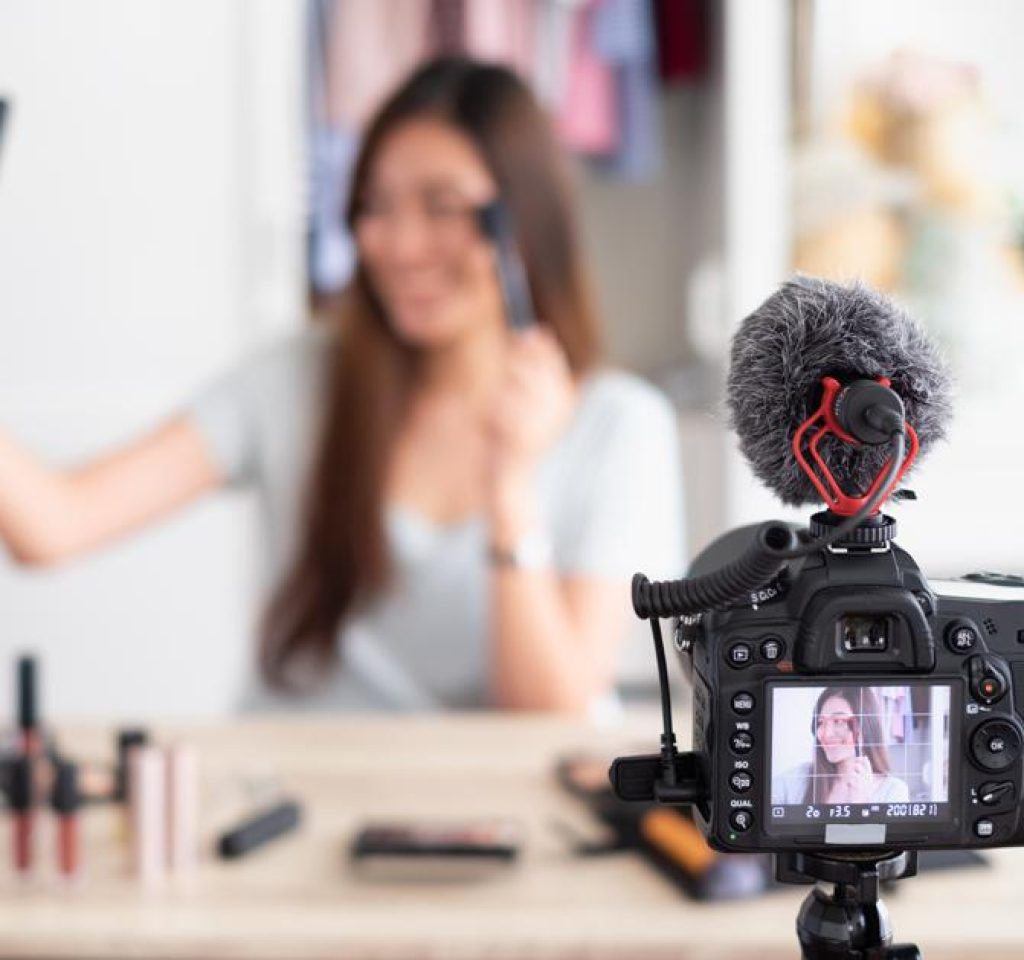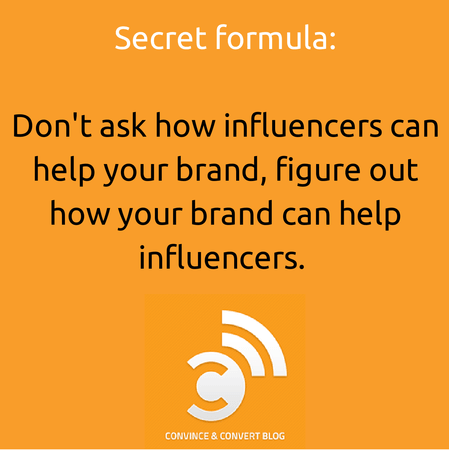What is Brand Strategy and How to Build One for Your Business?
A brand strategy not only helps you define who you are and who you are speaking to but also...
Digital Maarifa
December 17, 2022

Influencer marketing is rapidly becoming mainstream. However, many businesses have yet to try it, despite there being much evidence of its effectiveness. To an extent, this is typical for any innovation. There will always be trendsetters, followed by mainstream users, and finally, laggards taking their time to try any new processes. However, influencer marketing has always suffered from a perceptual bias. There are still people who think that influencer marketing is no more than working with celebrities.
But influencer marketing is so much more than just celebrity marketing. Influencer marketing involves using online experts to promote suitable products to their custom audience.
Summary



As its name implies, influencer marketing involves businesses partnering with people of influence to help them with their online marketing. An influencer is somebody with the power to affect the purchase decisions of others. An influencer can do this because he or she has authority, knowledge, position, and a special relationship with his or her audience. Influencers usually have a significant following in a niche or topic, and actively engage with them.
Although influencer marketing grew out of celebrity marketing, it is very different. Modern influencer marketing is so much more than movie, music, or sports stars pushing unconnected products to their fans.
So many people misunderstand this point that it is worth emphasizing:
Influencer marketing is NOT celebrity marketing. Influencers are specialists whose followers all have an interest in the same subject. They are not superstars with lots of indifferent fans.
Influencers spend considerable time building their brand and cultivating their audience. If influencers understand how your product could benefit their followers, they may be happy to work with you. However, influencer marketing will only work if you sell a quality product. If your product is shoddy, sub-standard, or worse than your competitors, then nothing will make you repeat sales.
Influencer marketing is all about delivery. Brands work with prominent people in their market segment to distribute content.
Content marketing is wider. It occurs when firms create and distribute relevant, valuable content. The content is produced to attract and engage an audience. Content marketing covers the entire process of creating, distributing, and using content to meet your business goals.
Content marketing uses a variety of methods to share content and raise its visibility. One of the most effective ways is to use influencer marketing to distribute content. The influencers will often create the content they share, so there is some overlap, but ultimately, influencer marketing is simply one of the (best) distribution methods for content marketing.
There are multiple levels of help you can expect from influencers. The amount and types of assistance you can expect depend on the kind of relationship you have with your influencers. Clearly, you can expect more from somebody with whom you have a paid working relationship than you can from somebody who is helping you as a favor.
Typical ways that influencers could help you include:
You can’t expect influencers to provide you with unequivocal praise, however. They only have an influential status because they have established an authentic relationship with their audience.
There is no point engaging in influencer marketing just because you read somewhere that it was trendy. You need to know WHY you are carrying out your influencer marketing campaign. This will affect how you measure the success of the campaign, as well as your choice of influencers.
You need to tie each of your goals to a particular key performance indicator (KPI). Otherwise, how could you measure the success of your campaign?
Typical goals (with associated KPIs) include:
Another problem faced by some businesses is that they don’t know who they should be targeting with their campaign. You can’t possibly select the best influencers if you don’t know whom to influence.
If you already know your ideal target customer keep that persona in mind when your search for influencers. If you’ve tried successful PPC or paid Facebook advertising in the past, take a close look at how you targeted those campaigns.
For influencer marketing to be successful, you need to work with the influencers who influence your target audience. You need to select influencers whose audience matches your target market.
We tend to group influencers according to the size of their following. But don’t get too hung up on that. You don’t need to work with the biggest influencers – just the best influencers for your market.
The most common ways we group influencers by size are:
The first step in carrying out an influencer campaign is to know which influential people you should target. This is where you have to make the most crucial choice – the method you intend to use to carry out your campaign. The critical difference between the three ways is cost.
Initially, the only way you could undertake an influencer marketing campaign was to use the organic method to find influencers. Although you obviously will still have to pay many influencers, you don’t have to pay anything to discover your influencers or manage your campaign.
With the organic method, you carry out all of your influencer selection, management, and analysis internally. You don’t have access to most paid tools, and you have to build relationships with influencers over time. The worst part of this, however, is that even if you spend months wooing a specific influencer, there is no guarantee that he or she will want to partner with you.
You will need to spend time on social media each day, researching and studying who has made an impact on your target market. You will then need to get to know these people gradually.
Assuming you have defined your goals, you should know the type of influencers for whom you are searching. You can ignore anybody who does not appeal to your target audience.
You will find some free tools that can help your influencer selection. These include:
There are now many platforms that offer a range of tools to help you operate your influencer campaigns. You will find platforms providing the following services:
The influencer discovery tools, in particular, can simplify your influencer discovery greatly, and despite the cost of paying a subscription, you could easily save money in the long run when allowing for the additional time required for organic influencer selection.
If you opt to use a platform, you will typically be asked to describe the types of influencers with whom you wish to work. The platform will then provide you with a list of potential influencers who meet your search criteria.
Some platforms work in reverse. You create a gig, describing your influencer needs. You advertise your gig on their platform, and then influencer members make offers to you.
Some firms prefer a hands-off approach to their influencer marketing, much like they do traditional advertising. If that describes you, then you should consider working with Digital Maarifa Agency.
The agency will do most of the legwork involved in finding suitable influencers for your brand, and then run your campaign for you. You will still need to define your goals, however. Influencer marketing agencies may do an excellent job of organizing your campaign for you, but it is still your campaign. Without suitable goals, even the most professional agency can’t work wonders.
An advantage of working with an agency is that you do not have to do much influencer outreach. You pay the agency to perform this for you. Similarly, some of the platforms help reduce the need for influencer outreach, particularly those with an influencer marketplace, which shifts the focus to influencers finding brands, rather than vice versa. Also, some platforms recommend pre-vetted influencers, who have already indicated their willingness to work with suitable brands.
However, in all other cases, influencer outreach is an essential step for any brand wishing to engage in influencer marketing.
Once you have created a list of valuable influencers for your brand, you need to go through the slow and steady steps of building relationships with your potential influencers.
Remember that influencers are not there to serve you. No matter how big or well-known your company is, does not mean that an influencer, or his or her audience, will want to have an interest in you.
You are going to have to spend time building relationships with potential influencers. This could be time-consuming, and you will need to resist any pushes from above for a quick fix.
Study your selected influencers. Try and determine what makes them so popular. Why do so many people choose to follow and engage with them?
The amount of engagement at this point will depend on whether you are connecting with influencers you found on a platform (used to working with brands) or whether you are approaching them without any warning. It also depends on your budget. You will find it much easier to connect with influencers if you intend to pay them, compared to when you want them to promote you as a favor.
If you want to connect with influencers who have already indicated a willingness to work with brands and are prepared to negotiate a price, you can often jump straight to proposing via email. Some platforms provide tools for secure communication, too.
In other cases, though, you will need to woo potential influencers. Start by following or friending them on their most important social channels. You then need to interact with them. Share their material; comment on their posts; like their photos, videos, blog posts, and other content. You need to build an online relationship with them in a similar way to how you would establish a real friendship. Don’t try to make any pitches, or talk any sales talk, in the early days of your relationship.
A possible sequence for organically connecting with influencers could be:
If you’re connecting with influencers via a platform (or agency) who have already indicated a willingness to work with brands, you might be able to jump to Step 8. But don’t be tempted to take shortcuts otherwise.

Our CEO, Nasrin Jimmy Mdee believes there are three critical ingredients to a successful influencer pitch:
When you reach out to potential influencers, make sure you mention them by name. Avoid any sentences like “Dear Sir” or “Dear Madam”, which sound cold and impersonal.
You could begin an email with one of the following opening lines:
Your subject line should be vague enough to pique interest but have enough detail for any personalization to be distinct.
Begin your email with a short friendly greeting. Either write a brief paragraph introducing yourself, or simply sign off at the end, with your name, role, and company name.
Keep your email short and to the point; influencers are busy people. Offer the influencers something that you know will benefit them.
Genuine influencers will only be willing to work with you if they believe that your product provides value to their supporters. If influencers were to try and pitch irrelevant or shoddy products to their followers, they would quickly lose credibility. There is no point in trying to work with influencers who have an audience that differs from your target market.
There are many possible ways you could choose to work with your influencers:
To some extent, influencer relationship management depends on how you acquired your influencers. There is a big difference between an influencer who you have spent a long time wooing, and building an organic relationship, with and an influencer you found in a platform or agency search.
If you sign a formal contract to work together, you will have higher expectations of success. Also, agencies and some platforms have tools that simplify influencer management.
A significant factor here is cost. The more you have paid to find and engage influencers, the more control you have. If you have wooed your influencers organically, they have more power in the relationship.
The most important relationship is between your influencers and their audience. Without authentic relationships there, there is little reason for you to have a relationship with the influencers.
Influencers know what content works best with their audience. You will gain little by trying to foist your content onto them. You will achieve better results by giving your influencers some leeway with content and collaborating with them to create it.
It’s a good idea to create a strategy to track your influencer relationships. This will help you determine which ones bring the best results for your brand. It also helps to ensure that you don’t lose their messages and requests. If you use a customer relationship management (CRM) tool to manage your customers and leads, you could adapt this to help you keep track of your influencers. Some of the platforms provide tools to help with influencer relationship management.
Some marketing campaigns are solely influencer-based. In other cases, influencers are just one part of an overall marketing strategy. You could choose to incorporate influencers into every part of your marketing – from market research to marketing execution.
You could consider influencers to be “super consumers.” They shop and buy products like regular consumers. They can provide you with feedback from thousands, possibly millions, of other consumers. It won’t take long for your influencers to give you honest feedback on whether an item in your product range works or not.
You could let your influencers tell your brand’s story. They usually spend time telling stories online, either in text, as a video, as a series of images, or in some other way. Therefore, a quality influencer should be able to tell your story to their followers better than you can.
With the maturing of influencer marketing, it is now much easier to determine the ROI of any influencer marketing campaign.
There is no specific ROI measure for every influencer campaign, though. It will vary from campaign to campaign, and you may use a wide range of analytical analyses over a set period.
If you followed our suggested process for running an influencer marketing campaign, you would have begun the process by setting goals for your campaign. You, therefore, need to gauge how your campaign has succeeded in meeting those goals. You have to measure and monitor relevant key performance indicators (KPIs) that match each of your goals.
For example, if you set a goal to increase your Instagram following by a certain percentage over your campaign, then you need to compare your Instagram follower numbers before and after the campaign. Suppose your goal was to increase sales of a product by a certain percentage during your campaign. You would need to focus on the product’s sales pattern during that period.
Typical statistics brands like to know about their influencer marketing campaigns include:
If you aim to increase awareness, you should set a measurable goal based on the number of impressions. If you want to build your branding, then you will be more interested in the engagement rate. If you are more interested in conversion, you need to keep a close eye on whether you have had increased sales following the campaign.
If you sell online, it is particularly easy to see where these increased sales come from, using your site’s Google Analytics. This will show the source of your website’s traffic. You will want to see any changes due to your influencer campaign.
When you partner with paid influencers, you should be able to ask them for their post stats that relate to your campaign. Many platforms and agencies provide dashboards that show relevant analytics for your campaigns.
A brand strategy not only helps you define who you are and who you are speaking to but also...
15 Digital Marketing Trends to Plan for in 2023 Digital Maarifa - Development Team December 6, 2022 Digital Marketing...
Google Ads: Does It Still Work for Small Businesses? Digital Maarifa - Development Team November 16, 2022 Online Advertising...
How to Attract Potential Customers With Content Marketing Digital Maarifa - Development Team November 16, 2022 Business Marketing 10...